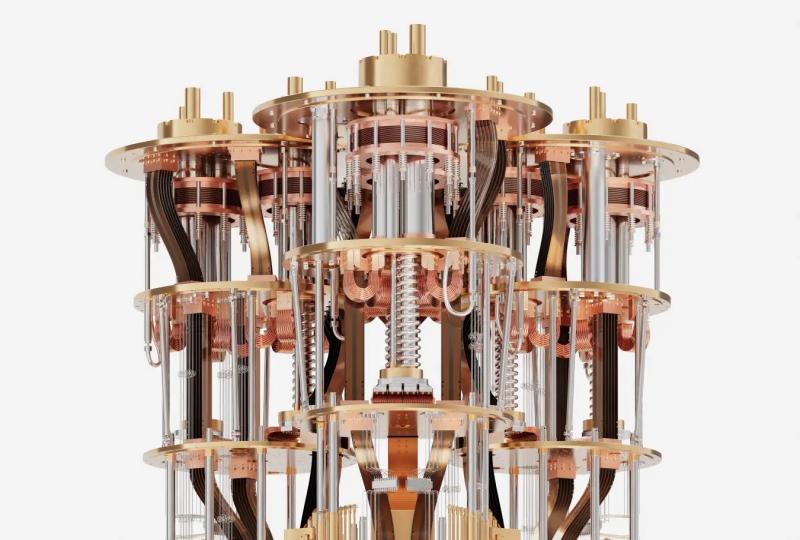What is a Quantum Processor? Heart of Quantum Computing
2025.03.09 · Blog what is a quantum processor
Quantum computing is an evolving field that promises to revolutionize industries by solving problems that are beyond the capabilities of classical computers.
At the heart of every quantum computer lies the quantum processor, a component responsible for performing the complex calculations that make quantum computing possible.
But what exactly is a quantum processor, and how does it work? This article will provide an in-depth exploration of quantum processors and their significance in the world of quantum technology.
The Basics of Quantum Computing
To understand a quantum processor, it’s essential first to grasp the principles of quantum computing.
Traditional computers rely on bits as the basic unit of information, where each bit represents a 0 or a 1. Quantum computing, on the other hand, uses quantum bits, or qubits, which can exist in multiple states simultaneously, thanks to a phenomenon known as superposition.
Moreover, qubits can also be entangled, a special quantum state where the state of one qubit is directly related to the state of another, regardless of distance.
These quantum properties—superposition and entanglement—allow quantum computers to perform certain types of calculations exponentially faster than classical computers.
What is a Quantum Processor?
A quantum processor is the core element of a quantum computer. Just as a classical computer processor performs arithmetic and logic operations on bits, a quantum processor carries out operations on qubits.
The quantum processor manipulates qubits using quantum gates, which are mathematical operations that change the state of qubits.
These gates can perform operations like flipping the state of a qubit from 0 to 1, creating entanglement between qubits, or applying other quantum transformations.
Unlike classical processors, which use electrical signals to process bits, quantum processors typically use a variety of physical systems to represent qubits. These systems could include superconducting circuits, trapped ions, photons, and quantum dots, among others.
The specific method used to create and manipulate qubits varies depending on the quantum computing platform, but the goal remains the same: to leverage the unique quantum properties of qubits to perform calculations that are not possible on classical machines.
How Does a Quantum Processor Work?
A quantum processor works by utilizing quantum mechanics to perform computations in a fundamentally different way from traditional processors. Here's an overview of the basic steps involved:
Initialization: The quantum processor starts by initializing the qubits in a specific state, typically 0 or a superposition of 0 and 1.
Quantum Gates: The qubits are manipulated using quantum gates. These gates alter the states of the qubits, and can also create entanglement between them. A series of gates is applied in a precise sequence to perform a quantum algorithm.
Measurement: After the quantum operations are completed, the quantum state of the qubits is measured. This measurement collapses the qubits into one of their possible outcomes (either 0 or 1), providing the result of the computation.
Post-Processing: The results of the quantum measurement are then processed and interpreted. Since quantum measurement is probabilistic, repeated executions of the same quantum algorithm may yield different results, which are then analyzed statistically.
Types of Quantum Processors
Quantum processors can differ in terms of the physical systems used to implement the qubits. Some of the most common types include:
Superconducting Qubits: These are based on superconducting circuits that are cooled to extremely low temperatures. Companies like IBM and Google use this approach in their quantum processors.
Trapped Ions: Ions are trapped in electromagnetic fields and manipulated using lasers. This method is used by companies like IonQ and Honeywell.
Photonic Qubits: These quantum processors use photons, which are particles of light, as qubits. This approach is championed by companies like Xanadu and PsiQuantum.
Quantum Dots: Quantum dots are semiconductor particles that can hold qubits in their energy states. This technology is still in development but holds significant promise.
Each of these types of quantum processors has its advantages and challenges, with ongoing research focusing on improving qubit coherence, error rates, and scalability.
Why Quantum Processors Matter
Quantum processors are the driving force behind the power of quantum computing. Unlike classical processors, which rely on binary logic to perform calculations, quantum processors harness the power of quantum mechanics to explore exponentially more possibilities in parallel.
This gives them the potential to solve problems related to cryptography, optimization, machine learning, and drug discovery that would be impossible or take far too long for classical computers.
In industries like finance, pharmaceuticals, and artificial intelligence, quantum processors could lead to groundbreaking advances.
For instance, in cryptography, quantum processors could break encryption algorithms that are currently thought to be secure. In materials science and drug discovery, they could model molecular interactions at an unprecedented level of detail, potentially leading to new medicines and materials.
Challenges in Quantum Processor Development
While quantum processors hold great promise, their development comes with significant challenges. The main obstacles include:
Decoherence: Quantum states are fragile and can be easily disturbed by their environment, leading to errors in calculations.
Error Correction: Quantum error correction techniques are still being developed to handle the high error rates associated with qubits.
Scalability: Creating large-scale quantum processors with many qubits remains a difficult task. To truly realize the potential of quantum computing, quantum processors must be able to scale up efficiently while maintaining coherence and minimizing errors.
Conclusion
A quantum processor is a fundamental component of a quantum computer, enabling it to perform complex computations using the principles of quantum mechanics.
By leveraging qubits, superposition, and entanglement, quantum processors can solve problems that classical computers cannot.
While significant challenges remain in their development, ongoing research promises to unlock the full potential of quantum processors, paving the way for future breakthroughs across various fields.
As quantum computing continues to advance, the role of quantum processors will only become more crucial in shaping the future of technology.
Featured Content






